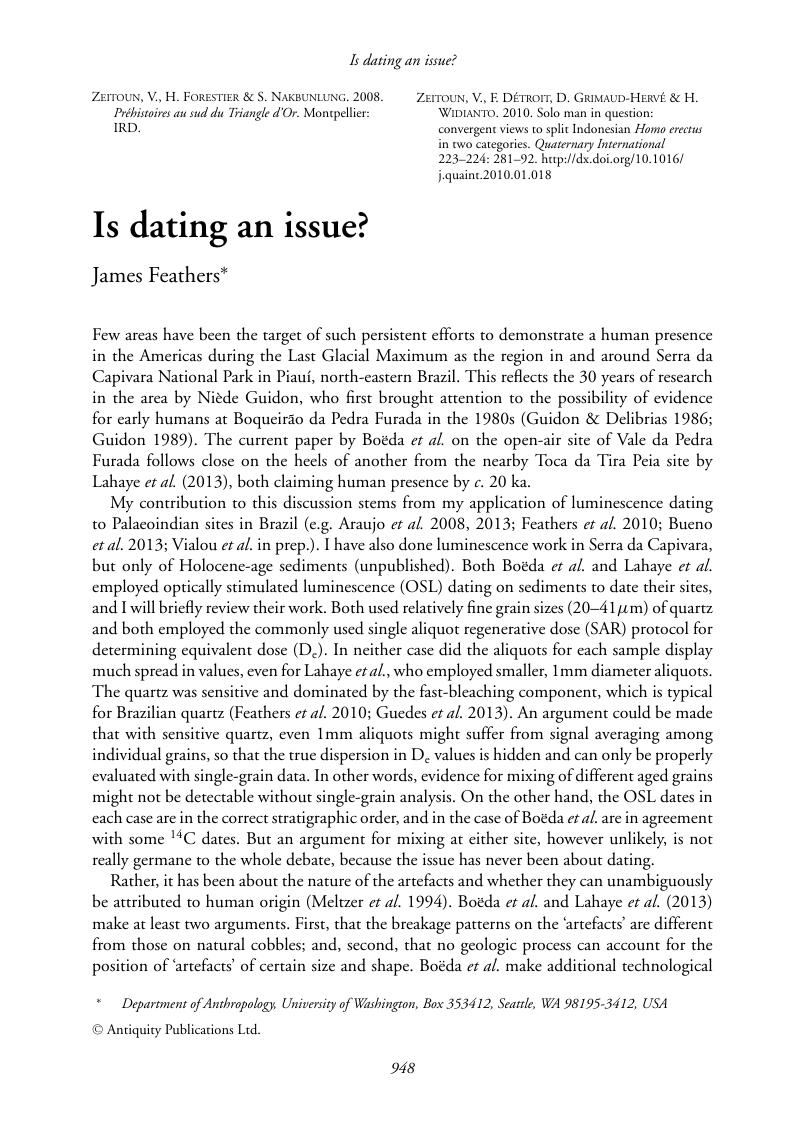Crossref Citations
This article has been cited by the following publications. This list is generated based on data provided by Crossref.
Borrero, Luis Alberto
2016.
Ambiguity and Debates on the Early Peopling of South America.
PaleoAmerica,
Vol. 2,
Issue. 1,
p.
11.
Carandell Baruzzi, Miquel
2016.
The First American Scoop: The Pedra Furada Controversy in Newspapers (1978-2015).
Centaurus,
Vol. 58,
Issue. 3,
p.
239.
Lahaye, C.
Guérin, G.
Gluchy, M.
Hatté, C.
Fontugne, M.
Clemente-Conte, I.
Santos, J.C.
Villagran, X.S.
Da Costa, A.
Borges, C.
Guidon, N.
and
Boëda, E.
2019.
Another site, same old song: The Pleistocene-Holocene archaeological sequence of Toca da Janela da Barra do Antonião-North, Piauí, Brazil.
Quaternary Geochronology,
Vol. 49,
Issue. ,
p.
223.
Sutter, Richard C.
2021.
The Pre-Columbian Peopling and Population Dispersals of South America.
Journal of Archaeological Research,
Vol. 29,
Issue. 1,
p.
93.
Feathers, James
2023.
The Contributions of Luminescence Dating of Sediments to Understanding the First Settlement of the Americas.
PaleoAmerica,
Vol. 9,
Issue. 2,
p.
81.





